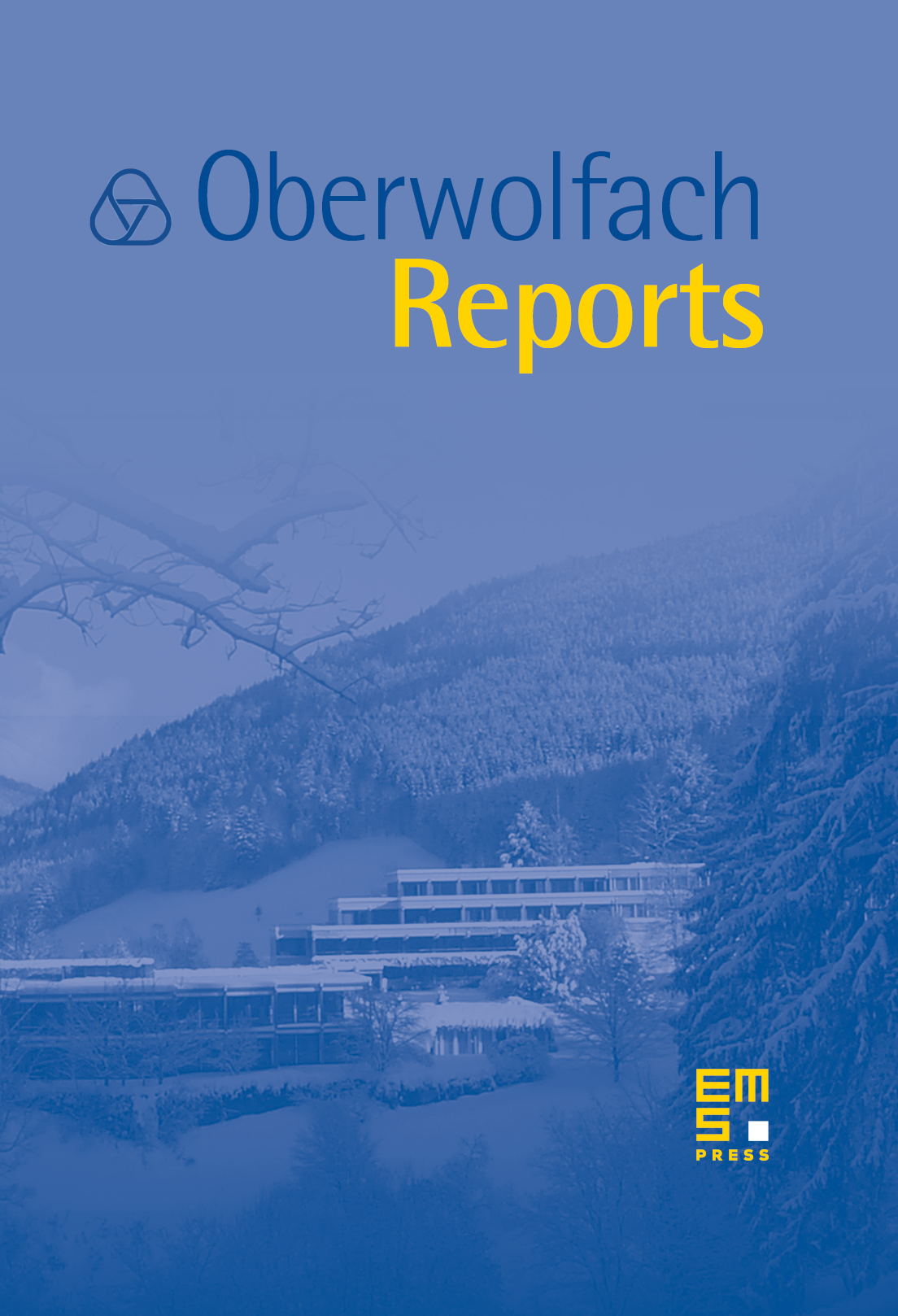Tropical Geometry
Eva Maria Feichtner
Universtät Bremen, GermanyAndreas Gathmann
Universität Kaiserslautern, GermanyIlia Itenberg
Université de Strasbourg, FranceThorsten Theobald
J. W. Goethe-Universität, Frankfurt a.M., Germany

Abstract
This is the first appearance of “Tropical Geometry” as the topic of an Oberwolfach workshop, though the subject figured earlier at the Forschungsinstitut as an Oberwolfach Seminar on “Tropical Algebraic Geometry” in October 2004. The workshop was organized by Eva-Maria Feichtner (U Bremen), Andreas Gathmann (U Kaiserslautern), Ilia Itenberg (U Strasbourg) and Thorsten Theobald (U Frankfurt) and brought together about 50 mathematicians from the many fields Tropical Geometry touches upon. The workshop came timely as the subject develops into a field of its own with numerous connections to diverse branches of mathematics.
Tropical Geometry can be considered as an algebraic geometry over the semifield . The name was coined by French computer scientists to honor the pioneering work of their Brazilian colleague Imre Simon on the max-plus semiring. Alternatively, Tropical Geometry can be understood as the geometry resulting from complex geometry by a certain degeneration process: complex toric varieties are replaced by real linear spaces and, more generally, complex algebraic varieties are replaced by polyhedral complexes, i.e., by piecewise-linear objects.
The roots of Tropical Geometry extend at least to Bergman's logarithmic limit sets (in the 70's), Viro's patchworking construction (in the late 70's), Maslov's dequantization of positive real numbers (in the 80's), and to the use of idempotent semirings in applications to optimization, control theory, and max-plus operators (in the 90's). In recent years, the various research directions have been fruitfully merged, generalized and advanced to what is now called Tropical Geometry. Along the way, deep connections to numerous branches of pure and applied mathematics have been unveiled; among them e.g. algebraic geometry, symplectic geometry, complex analysis, dynamical systems, geometric combinatorics, as well as computer algebra, algebraic statistics, and phylogenetics.
Despite of the short time span of its recent development, Tropical Geometry has already been widely recognized as an important discipline and as a unifying viewpoint for the transition of algebro-geometric problems to combinatorial ones. The aim of this Oberwolfach workshop was to furnish this newly emerging field with an outstanding communication platform and to foster the interaction between the various research directions that are involved.
Moreover, Tropical Geometry is still in a phase of forming its foundations: fundamental concepts, such as abstract tropical varieties, and basic definitions, such as a proper notion of tropical intersection multiplicity, are still under construction. It was therefore an additional goal of this workshop to advance the field through discussions among people with different views of the subject.
In both respects, the workshop met all expectations: in 22 fifty-minutes talks the current state of development was outlayed from various viewpoints. An afternoon with half-hour talks by graduate students and an evening session featuring a software presentation completed the picture. This part of the workshop is well accounted for by the following collection of abstracts.
Most importantly – and only forthcoming activities and publications will indirectly report on this – numerous informal discussions evolved between participants with most different mathematical backgrounds. A fruitful atmosphere of exchange developed during the week, notably thanks to the excellent facilities at the Mathematisches Forschungsinstitut.
On behalf of the participants, we wish to express our sincere thanks to the Institute for hosting this workshop.
Cite this article
Eva Maria Feichtner, Andreas Gathmann, Ilia Itenberg, Thorsten Theobald, Tropical Geometry. Oberwolfach Rep. 4 (2007), no. 4, pp. 3303–3368
DOI 10.4171/OWR/2007/57